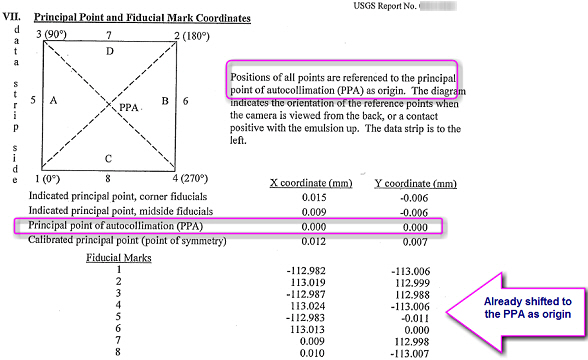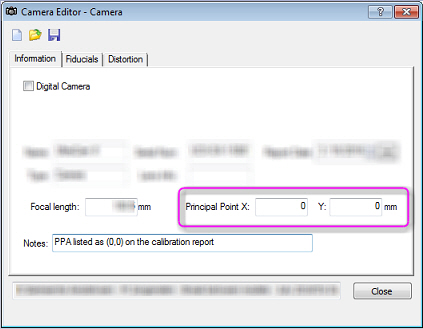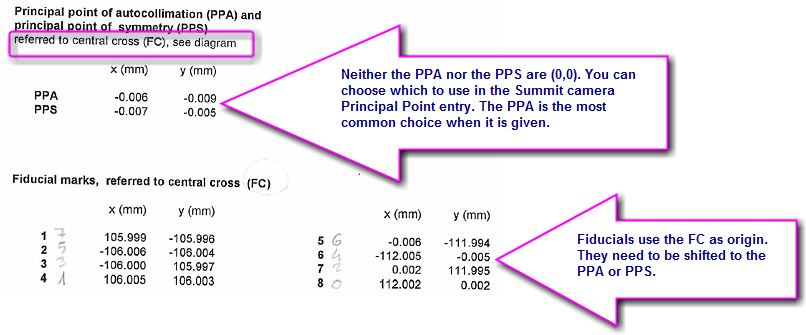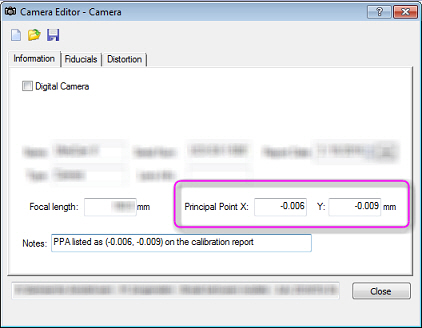Inpho Products, Windows 10, Aerial Film Camera Principal Point
Three topics:
- Advice document for Inpho products
- Windows 10
- How to enter the principal point for an aerial film camera
1. We updated the document that discusses what to do if your Summit project doesn’t match the good results you saw in your Trimble Inpho aerotriangulation (AT). This document is for you if:
- your Summit project doesn’t match your good Match-AT or UAS Master results
- you use an older version of Inpho software with a newer version of Summit
- you don’t know which version of Inpho Match-AT or UAS Master was used
- *New!* you have Inpho 1, 7.1.1, or 7.1.2 exporting to Summit 7.2 or higher and the project is in U.S. Feet or International Feet units.
2. Yes, you can use Windows 10 with a new enough video card. (Read June Tech Tip)
Have Windows 10 already? Here are some more handy tips on the web: http://www.pcworld.com/article/2875600/windows/windows-10-the-best-tips-tricks-and-tweaks.html#slide16
3. Aerial Film Camera Principal Point:
You’re making a Summit camera file for an aerial film camera. The camera calibration report lists a fiducial center (FC), Principal Point of Symmetry (PPS), and Principal Point of Autocollimation (PPA). Which one do you enter in Summit’s single Principal Point field in the Summit camera?
The answer is not always the same, because camera calibration reports from different calibration organizations and from different decades are not always the same. You must read the camera calibration report carefully to see whether the FC, PPA, or PPS is identified as the origin for the fiducial coordinates.
It is important to enter the principal point correctly in the Summit camera dialog before any measurement begins, because it affects the interior orientation.
When either the PPS or PPA displays as (0,0), it means the fiducial coordinates in the calibration report are already shifted to that point. If the fiducial coordinates are already shifted to a better origin than the FC, you have to be careful not to shift them again by entering the wrong principal point in the camera file.
If the fiducials are listed with the FC as origin, then they need to be shifted to the PPA (or PPS, it’s your choice). In this case, the PPS and PPA will not be (0,0), but will have some shift in x, y, or both.
Summit camera Principal Point rules:
- If either the PPS or PPA is (0,0) on the report, then the fiducial coordinates are already shifted to that point as origin, and you should enter (0,0) in the Summit camera’s Principal Point fields. It is common to see the PPA=(0,0), but some old reports may list the PPS=(0,0), especially if there is no PPA on the report. Having (0,0) for the PPA or PPS doesn’t mean there is no offset between the FC and the PPA; it simply means that the offset from the FC has already been applied to the fiducial coordinates.
Example:
Camera Calibration Report with the PPA as origin
Summit Camera Principal Point for PPA=(0,0)
- If neither the PPA nor the PPS is (0,0), then the fiducial coordinates are not already shifted. They have the geometric FC as origin. You may choose whether to enter the PPA or PPS in the Summit camera’s Principal Point fields. The PPA is the most common choice when it is given. Some historic camera reports may not have a PPA, in which case you can enter the PPS.
Example:
Camera Calibration Report with the FC as origin
Summit Camera Principal Point for the FC as fiducial coordinate origin
Q: Would I ever enter the PPS when the PPA is (0,0) or when both the PPA and PPS are not (0,0)?
A: Maybe, but you would need a good reason to think that the PPS is better than the PPA on this calibration report. The PPA is generally accepted as the better method. If you don’t know which to use, then use the PPA.
Q: My camera was first processed by a third-party AT application. Should I try to match the principal point they used?
A: Absolutely yes. The principal point is a key component of the interior orientation. You should try to match the interior orientation of the third-party AT software as best you can. Sometimes this means opening the third-party project in a text editor and trying to find the principal point entry. DAT/EM highly recommends you compare it to the camera calibration report and make sure the correct value was used for the AT. Hint: While you’re at it, see if earth curvature and atmospheric refraction corrections were on or off and match them in the Summit project settings.
Q: I have third-party software that asks for both the PPA and PPS. Why doesn’t Summit?
A: Although your third-party software may ask for the PPA and the PPS, internally it decides to use one and ignore the other. The PPA and PPS are two different methods to define the image origin; they simply can’t be used at the same time. By asking you for both, your other software chooses either the PPA or PPS for you. Summit allows you to choose, which is why Summit asks you for only one entry.





Comments are closed.